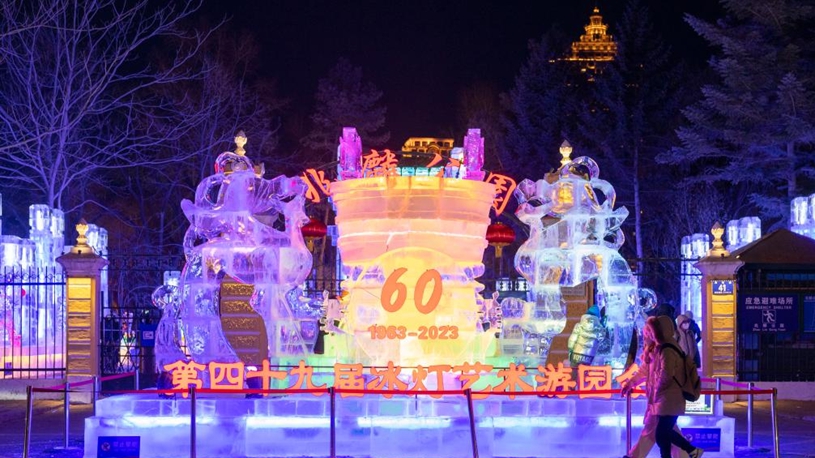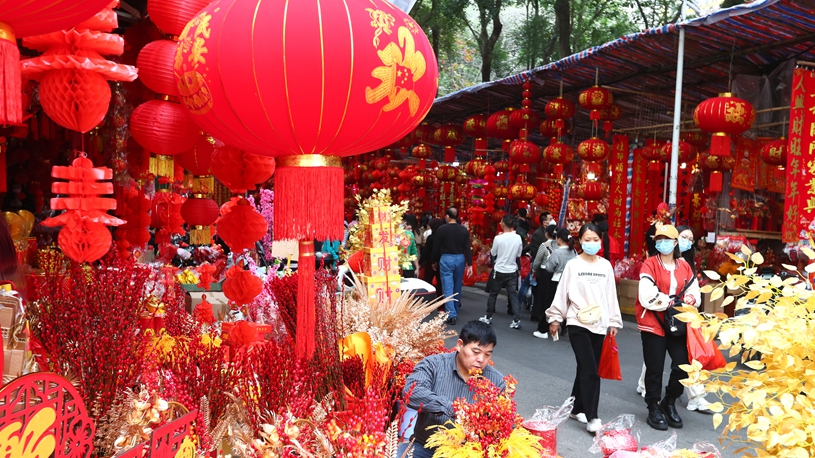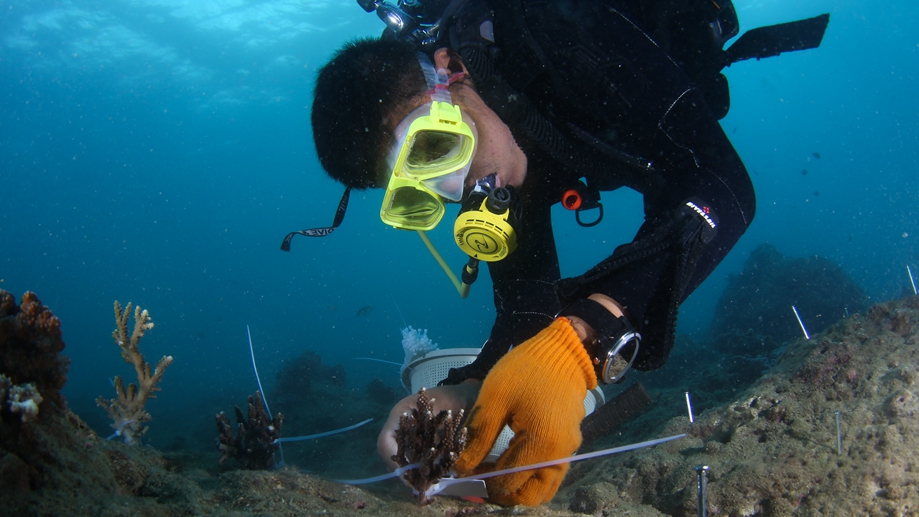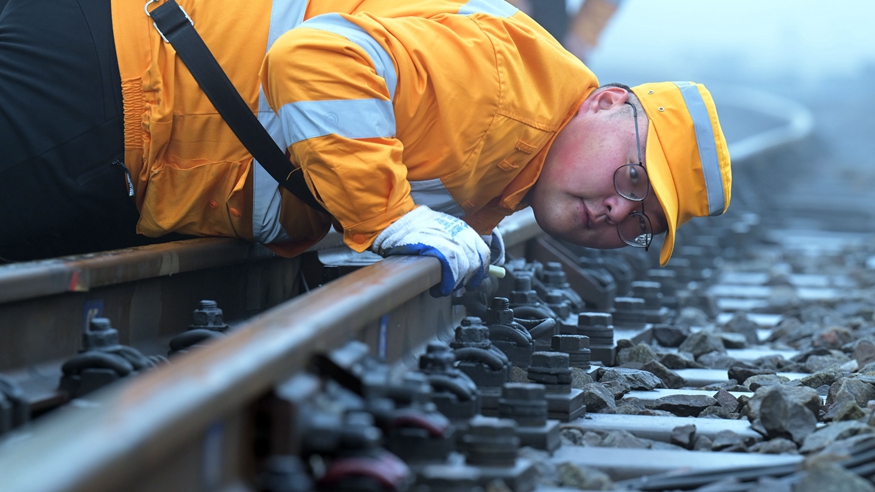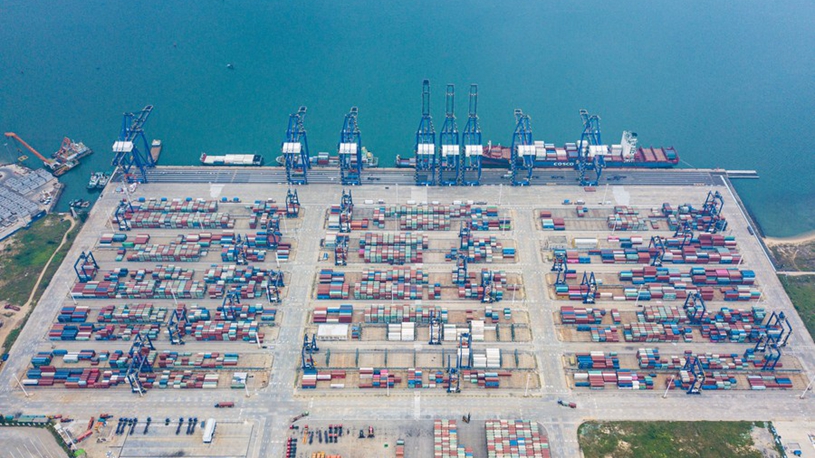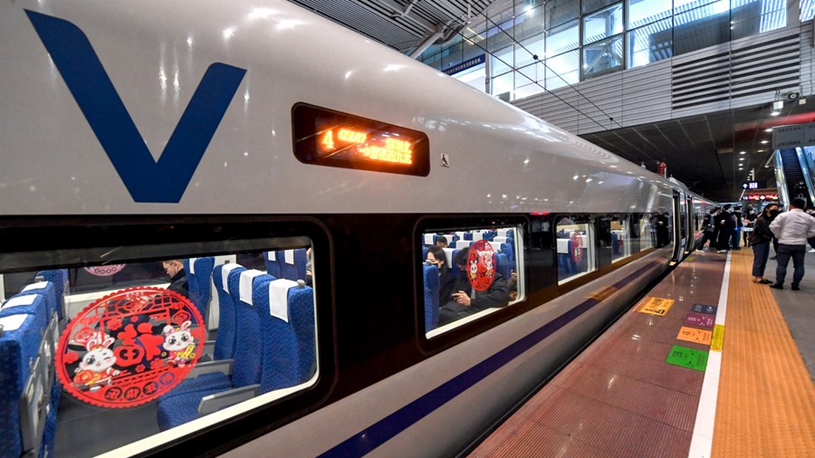* As the first travel rush after the country optimized its COVID-19 response, this year's Spring Festival travel rush will be the most challenging in recent years.
* Facing the rising passenger flows, China's railway and aviation operators have planned ahead to boost transportation efficiency.
* China has taken multi-pronged measures against risks from COVID-19 infections, adverse weather events, and dysfunctions of transport facilities to ensure safe and sound Spring Festival transport.
BEIJING, Jan. 14 (Xinhua) -- As the unleashed pent-up travel demand has brought back a Spring Festival travel rush unseen for three years, China's transport sectors are making all-out efforts to ensure smooth and safe journeys amid optimized COVID-19 response.
The total number of passenger trips for the year's travel rush, or "Chunyun," is expected to reach 2.1 billion, almost twice as much as last year or 70.3 percent of the 2019 reading, according to the Ministry of Transport.
Of the total, about 55 percent of the trips will be driven by family reunions, 24 percent will involve migrating for work, and leisure and businesses will take up roughly 10 percent, respectively.
The latest data from the ministry showed that between Jan. 7 and 12, or the first week of the travel rush, some 221 million passenger trips were made nationwide.
The growing travel demand is a result of China's recent downgrading of COVID-19 management from Class A to Class B. Under Class B management, travelers no longer need to present health codes and negative nucleic acid test results or undergo temperature checks when entering railway stations and airports.
"As the first travel rush after the country optimized its COVID-19 response, this year's Spring Festival travel rush will be the most challenging in recent years, with a surge in both passenger flows and virus infections," Vice Minister of Transport Xu Chengguang said.
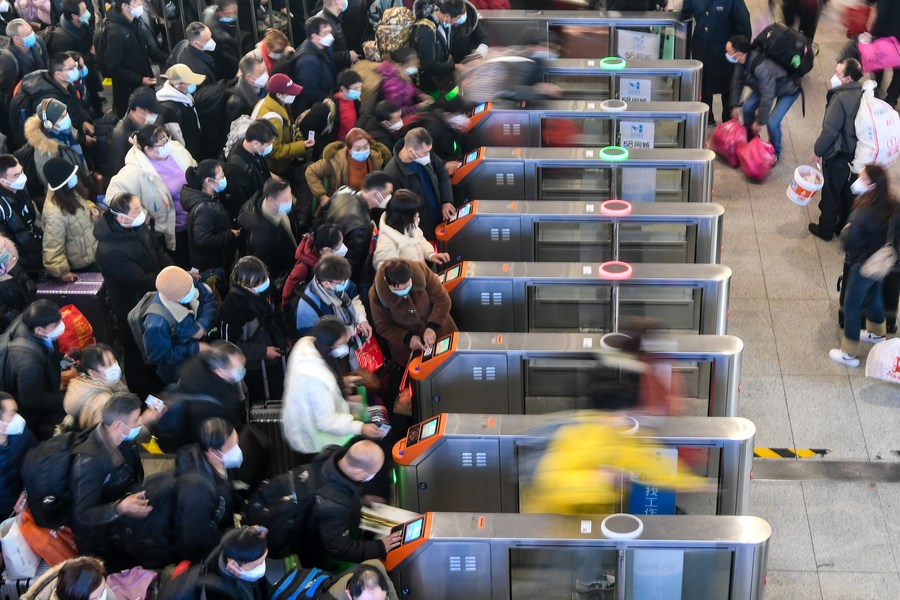
Passengers line up to enter Suzhou Railway Station in Suzhou, east China's Jiangsu Province, Jan. 7, 2023. (Xinhua/Li Bo)
EASIER JOURNEYS HOME
"The Spring Festival travel rush I used to be so familiar with is finally back," said Chen Ping, an attendant with a years-long service at the Ganzhou West Railway Station in east China's Jiangxi Province, while pointing at a long queue of passengers at the entrance.
In Guangzhou, capital of south China's Guangdong Province, migrant worker Li Jianxing could barely hide his excitement for a long-awaited family reunion during the Lunar New Year.
"I can't wait to be back home," said Li, who arrived at a railway station hours before departure, waiting for the train that would bring him back to his hometown in Shanxi Province, over 2,000 km north of Guangdong.
Li is among tens of millions of people on their way home for the Lunar New Year following the shift in China's COVID-19 response. Official data showed that on Jan. 7, the first day of the travel rush, a total of 34.74 million passenger trips were made by rail, road, water, and air all across the country, a 38.9-percent surge from the same period last year.
The journeys home are also simpler now for those returning from abroad -- according to the adjusted rules, the country has scrapped restrictions on international passenger flights, increased the number of flights in stages, and optimized the distribution of routes since Jan. 8.
Chen Xia, a native of Fuqing, east China's Fujian Province, has lived in Japan for more than a decade. Over the past three years, COVID-19 has disrupted her annual plan to return to Fuqing for the celebration of the Chinese New Year.
Thanks to the timely adjustments of inbound travel rules, Chen and her husband have booked a flight home on Jan. 16, without concerns about the trip being canceled or themselves being forced into quarantine.
"Only back in China can you get an authentic taste of the Spring Festival," said Chen. "We have spent so many years abroad, and our biggest wish is to reunite with families during the festival."
INCREASING TRANSPORTATION CAPACITY
Facing the rising passenger flows, China's railway and aviation operators have planned ahead to boost transportation efficiency.
China State Railway Group Co., Ltd. said that a peak day before this year's Spring Festival will see as many as 6,077 train lines in service, and the maximum seating capacity of trains for this year's travel rush will increase by 11 percent from the same period in 2019.
The country, moreover, saw some 4,100 km of new rail tracks begin construction in 2022, with over half of them for high-speed.
"We will give full play to our high-speed railway network amid the travel rush, and ratchet up the transportation capacity in key areas and at peak hours," said Huang Xin, head of the company's passenger transport department.
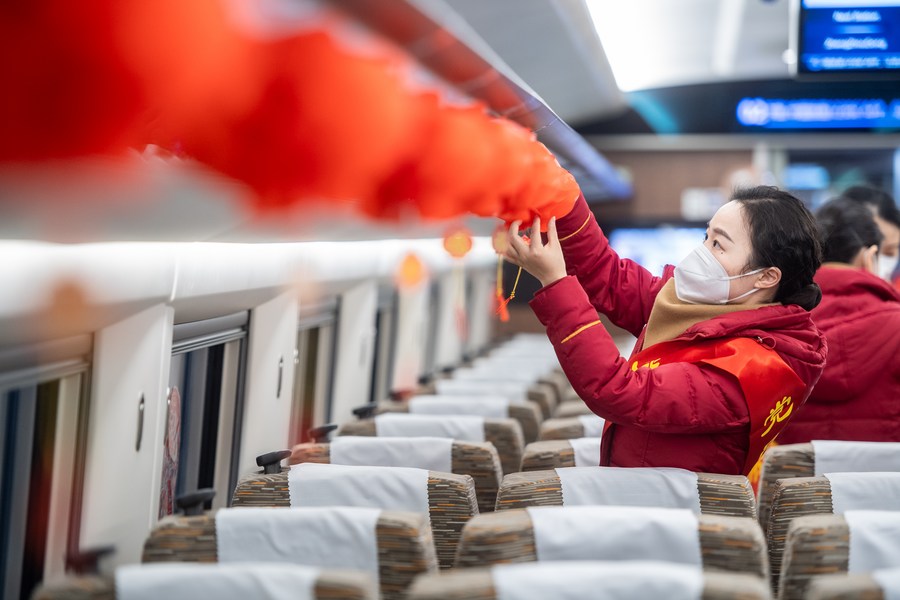
A train crew member decorates the carriage of a train at Wuhan Railway Station in Wuhan, central China's Hubei Province, Jan. 7, 2023. (Xinhua/Wu Zhizun)
To meet the growing demand for air travel, Wan Xiangdong, chief pilot of the Civil Aviation Administration of China, said the country will increase the average daily number of flights to 11,000 during the travel rush, equivalent to 73 percent of the level in the same period in 2019.
Domestic airlines are also encouraged to add more flights on popular routes, Wan said.
Unlike the previous Spring Festival transport characterized by more passenger trips and less cargo volume, Xu Chengguang said transportation demand for anti-COVID-19 supplies, festival supplies, energy, and food was on the rise this year.
Currently, all is going well, major traffic arteries and hubs are running smoothly, and key logistics indicators keep improving, Xu noted.
MAKING TRIPS SAFER
China has taken multi-pronged measures against risks from COVID-19 infections, adverse weather events, and dysfunctions of transport facilities, to ensure safe and sound Spring Festival transport.
While promoting paperless, contactless services such as online ticket selling and self-service ticket checking, transport operators nationwide are intensifying ventilation and disinfection at railway stations, expressway tollgates, and other public transport venues to minimize infection risks.
Among its latest attempts, east China's Zhejiang Province has invited a renowned healthcare expert to offer instructions regarding COVID-19 prevention and self-care on an outbound train, so that passengers would take better control of their health during the upcoming festival.
Ensuring transportation safety has also become a concern, as some transport services had been either suspended or kept running at low capacity as a result of the repeated disruptions from COVID-19 since 2020. Such risks could be exacerbated by cold waves and sleet during the travel rush.
To cope with the situation, operators across the country have doubled their efforts in facility maintenance, equipment overhaul, and staff training.
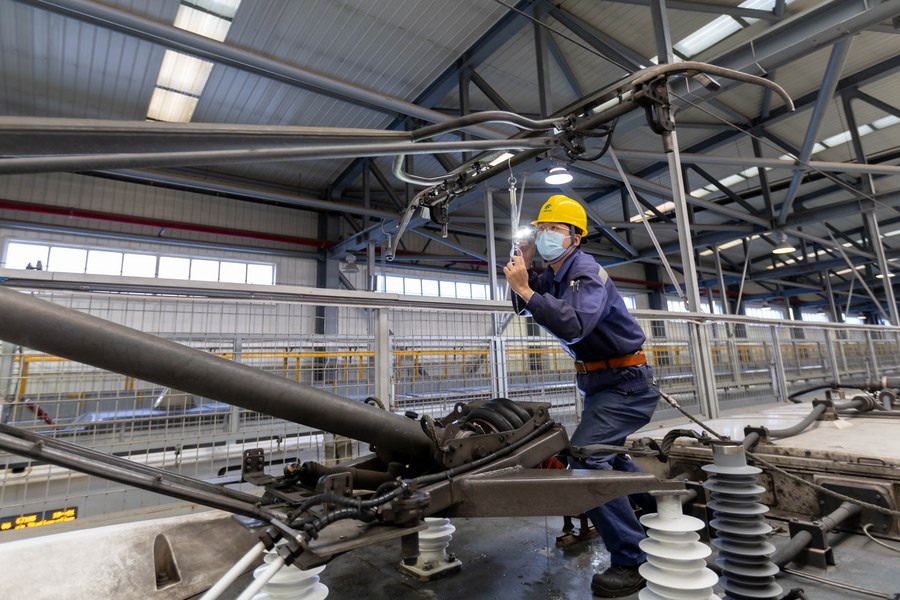
A worker carries out maintenance at the Hongqiao high-speed train depot in east China's Shanghai, Jan. 3, 2023. (Xinhua/Wang Xiang)
Railway workers have worked intensively at the Shanghai Hongqiao Railway Station, one of the transportation hubs in densely populated east China, to make sure all rail tracks work in good conditions.
Their maintenance work is being boosted by a new model of detector robot, which is able to reach every corner of the tracks, thereby increasing efficiency and saving manpower, according to the municipal railway department.
Smart technology has also been applied in Nanchang, capital of Jiangxi, where all parts of a train, including bogies, couplers, and brakes, are monitored and visible on a screen at a local maintenance garage.
The maintenance progress of each part is represented by changing colors in real time, so that railway workers can figure out where they should pay more attention.
(Video reporters: Deng Haoran, Di Chun, Zhang Mengjie, Yang Jing, Zhang Caixia, Fang Kuan, Guo Liangchuan, Zhang Haizhou; Video editors: Yang Zhixiang, Li Qin, Zhou Saang, Lin Lin) ■



